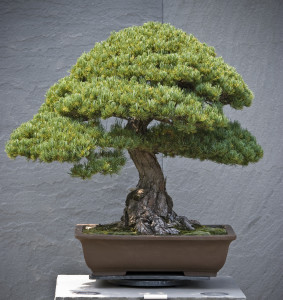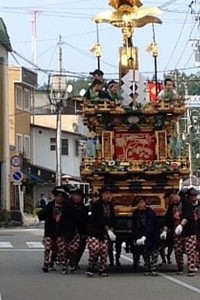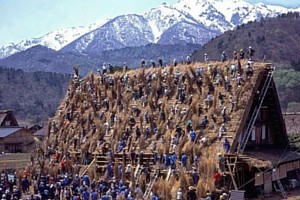 It is helpful to have a malleable kinesphere in Japan, because one often finds oneself in a crowd. For example, I have made a close and practical study of how to weave through a crowd while dragging a suitcase. Shape flow growing and shrinking is of little use (the suitcase, after all, has a fixed shape). Instead, one needs to watch for openings and slip through in a timely manner, or detect a stream flowing in your direction and go with the flow.
It is helpful to have a malleable kinesphere in Japan, because one often finds oneself in a crowd. For example, I have made a close and practical study of how to weave through a crowd while dragging a suitcase. Shape flow growing and shrinking is of little use (the suitcase, after all, has a fixed shape). Instead, one needs to watch for openings and slip through in a timely manner, or detect a stream flowing in your direction and go with the flow.
I’m a child of the American West. I prefer wide-open and under-populated spaces. But if I ever have to live in a densely populated place, I will choose Japan. This is because Japan is a civil society in which consideration for others still matters. We seldom experienced or witnessed pushing or collisions in the many crowded places we visited. We saw only one public argument. In contrast, we frequently saw young people give up seats on trains and buses to the elderly and women with children.
We couldn’t get reserved seats on a train for Kariuzawa (a resort outside of Tokyo) because it was a holiday weekend. Consequently, we had to wait in a long line on the platform to get into a car with unreserved seats. The line was so dense I was sure we would never manage to get onto the train. But we did. All the seats were taken, but my husband and daughter clambered into a niche by the restrooms with their suitcases, while I was jammed into the aisle of the car, near the door. Unbelievably, even more people got on the train at the next stop. We all stood cheek to jowl for the next 90 minutes. But it was quiet. There were no complaints. A few seated passengers even managed to squeeze through those of us standing in the aisle to go to the restroom and back to their seats again.
And so it went everywhere. People crowded onto buses and trains until they were quite packed. But everyone remained stoic and patient. I sometimes experienced a moment of silent panic, facing an oncoming mob when crossing the street. But I always got across, and no one ran into me.
Our daughter thinks the Japanese are magic. They can tolerate damp cold in the winter, they don’t sweat in the humid summer, and Japanese women can ride bikes in high heels. But above all, they remain polite, even when jammed together.

 General space is a commodity not to be wasted in Japan. Heavily forested mountains cover most of the archipelago of islands. Flatland suitable for habitation and cultivation is precious. Wherever we have traveled in Japan, small rice fields, gardens, and orchards are sandwiched between a jumble of residential, commercial, and industrial buildings.
General space is a commodity not to be wasted in Japan. Heavily forested mountains cover most of the archipelago of islands. Flatland suitable for habitation and cultivation is precious. Wherever we have traveled in Japan, small rice fields, gardens, and orchards are sandwiched between a jumble of residential, commercial, and industrial buildings. The Japanese also play hard, and some of the biggest, most labor-intensive parties take place in the street during traditional festivals. The fall festival in the city of Takayama, where our daughter teaches English, is one of the most spectacular.
The Japanese also play hard, and some of the biggest, most labor-intensive parties take place in the street during traditional festivals. The fall festival in the city of Takayama, where our daughter teaches English, is one of the most spectacular.
 Working hard is a tradition in Japan. Nowhere is this clearer than in Shirakawa-go, a remote farming village located in the mountainous region of Honshu between Takayama and Kanazawa. Shirakawa-go, now a UNESCO World Heritage site, is an outstanding example of a traditional way of life perfectly adapted to the environment and the resident’s social and economic circumstances.
Working hard is a tradition in Japan. Nowhere is this clearer than in Shirakawa-go, a remote farming village located in the mountainous region of Honshu between Takayama and Kanazawa. Shirakawa-go, now a UNESCO World Heritage site, is an outstanding example of a traditional way of life perfectly adapted to the environment and the resident’s social and economic circumstances. I just spent three weeks traveling around Japan by train with my husband and daughter. Both of them can speak and read Japanese. I cannot. Consequently, I am useless when it comes to most verbal transactions.
I just spent three weeks traveling around Japan by train with my husband and daughter. Both of them can speak and read Japanese. I cannot. Consequently, I am useless when it comes to most verbal transactions.